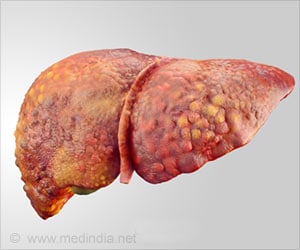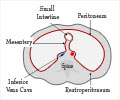Two gene therapy vectors partially correct lung disease in a pig model of cystic fibrosis.

‘Mice with cystic fibrosis do not get the lung disease that is the major cause of illness and death in human patients.’





“This is an important proof of principle for the idea that gene therapy for CF could work because we used an animal model that we know develops lung disease like people,” says Paul McCray, Jr., professor of pediatrics in the UI Carver College of Medicine and principal investigator for one of the studies, which both were published Sept. 8 in the journal JCI Insight. “In our short term experiments we saw evidence of correction of some of the known problems of CF, including salt movement across the cell membrane, the pH (acidity) of the airway surface liquid, and the ability of respiratory secretions to kill bacteria. This shows that the gene therapy has an effect that appears to be therapeutically relevant.” New animal model key for CF research
Despite the simplicity of the gene therapy concept – replace a disease-causing gene with a normal version - safely delivering genes to the correct cells so that they produce sufficient amounts of the replacement protein to treat a disease has proved difficult to achieve.
For CF, one significant hurdle has been the lack of a good animal model to test the therapeutic outcomes of gene therapies. Mice with CF do not get the lung disease that is the major cause of illness and death in human patients.
In 2008, CF researchers at the UI led by Michael Welsh, director of the PBI and a Howard Hughes Medical Institute investigator, made a major advance by creating a pig model of CF, which unlike CF mice, develops the lung disease that mimics the symptoms seen in people.
Advertisement
Gene therapy partially corrects CF lung problems
Advertisement
The other research team, led by Zabner and David Schaffer at University of California, Berkeley, focused on an adeno-associated virus AAV2. AAVs are safe for use in humans, including human lungs, and relatively easy to produce in large quantities. Genes delivered by AAV vectors are not permanently incorporated into the cell’s genome, but expression of the gene is often long-lived.
An important aspect of the AAV study was the molecular customization of the virus such that it efficiently targeted pig airway cells. Zabner and Schaffer created a AAV2 virus with five mutations that was 240 times more efficient than AAV2 at infecting pig airway cells. The team previously used the same directed evolution strategy to create an AAV virus that preferentially infects human airway cells.
The researchers showed that both gene therapies restored chloride currents in pig airway cells indicating that both vectors delivered working CFTR to the correct location in the airways. Both approaches also increased the pH and the bacterial killing ability of the airway secretions.
“Gene therapy development has experienced ups and downs and for CF there has been a long period with few clinical studies,” McCray notes. “But a non-viral gene therapy trial was completed recently in the UK, and we’ve also started to see successes in other single-gene diseases. With these results and all we have learned about getting the CFTR gene into the right place, there is renewed interest in moving forward with CF gene therapy again.”
Sinn adds that the new findings may move researchers closer to a “tipping point” for initiating clinical trials.
The vectors the UI researchers are developing could also have uses beyond CF gene therapy as multifaceted gene delivery tools. “If anyone wants to use gene editing, including CRISPR-Cas9, they need a way to deliver it to cells. Vectors like these are the key to that,” Zabner says.
Gene therapy for CF?
When the UI team started their gene therapy work more than 20 years ago there were no treatments available for CF. Now, several drugs are available that help patients with specific CF mutations. However, these drugs, which are expensive and are taken daily, don’t treat the majority of patients. A successful gene therapy approach would have the advantages of treating all forms of CF regardless of the genetic mutation, and potentially the therapy could be given just once to effect a permanent treatment.
“The big questions we are asked pertain to how feasible it would be to use this approach to treat people with CF. For example, how long the the gene expression last? Does it prevent disease from happening? Those questions will need longer term studies to answer,” says McCray.
These studies resulted from highly collaborative team science between the UI, University of California, Berkeley and Wright State University in Ohio, and among multiple departments within the UI Carver College of Medicine. The two lead authors of the studies are both UI graduate students; Ashley Cooney in the microbiology program, and Benjamin Steines is in the molecular and cellular biology program. The research was funded in part by grants from the National Heart, Lung, and Blood institute, the National Institute for Diabetes and Digestive and Kidney Diseases, both part of the National Institutes of Health, and the Cystic Fibrosis Foundation.
Source-Newswise















